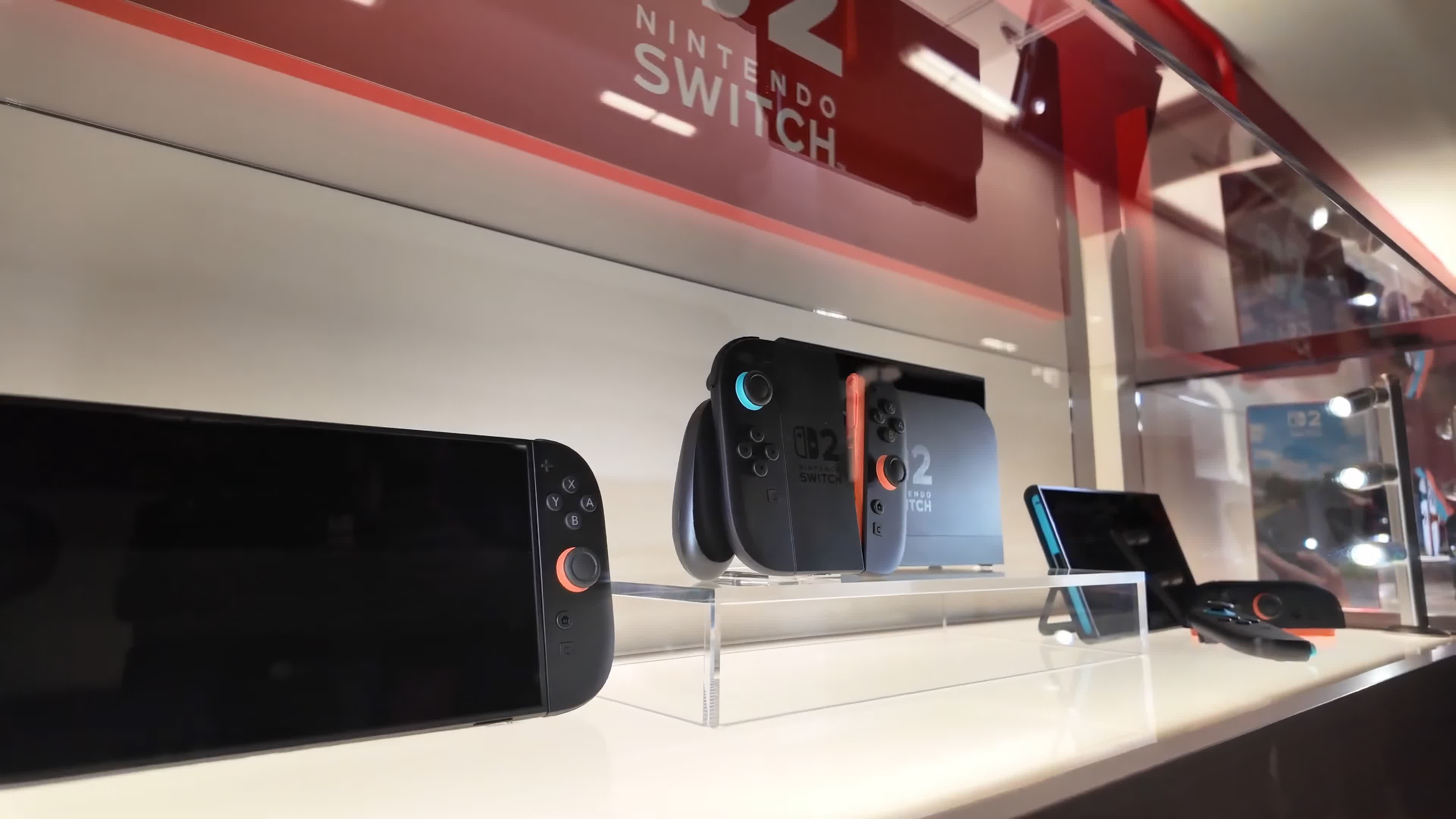Something to look forward to: Nintendo has officially revealed the technical specifications for the highly anticipated Switch 2, offering a glimpse into the console's architecture. Digital Foundry notes that the details remain somewhat "selective" but provide a clearer understanding of the hardware developers have at their disposal. Nintendo has conceded the console arms race to Sony and Microsoft but positions the Switch 2 to balance power, portability, and efficiency in the handheld market.

When Nintendo unveiled the Switch 2, it offered virtually zero details on the CPU, simply calling it a "custom processor made by Nvidia." Nvidia followed up with a similarly vague description of the chip. With the release just weeks away, Nintendo has finally confirmed some solid specs.
At the heart of the Switch 2 is a custom Nvidia Ampere chip, designated T239 – a clear upgrade from the original Tegra X1. It features an Arm Cortex-A78C CPU, offering significant gains over the older A57 cores. The chip runs at 998MHz while docked and 1.1GHz in mobile mode, with a potential 1.7GHz ceiling under specific conditions. Its 8-core CPU, with six cores available to developers, enables better performance for demanding games.
The Switch 2's Ampere-based GPU delivers a substantial boost in visual performance. It includes 1,536 CUDA cores reaching up to 1.71 teraflops in handheld mode, scaling to 3.072 teraflops while docked. Teraflop metrics can be misleading, so the hands-on gaming experience will better reflect the hardware's capabilities. The system also supports Nvidia's DLSS for enhanced anti-aliasing and performance scaling, along with ray tracing – though limited resources mean ray tracing will play a minimal role at launch.
The Switch 2 includes 12GB of LPDDR5X memory – a substantial upgrade from the original's 4GB. Developers can access 9GB, with the remaining 3GB reserved for system functions. The boosted memory supports smoother multitasking and more demanding games, with bandwidth peaking at 102GB/s in performance mode (docked) and 68GB/s in handheld mode.
| Switch 2: Nvidia T239 | Switch 1: Nvidia Tegra X1 | |
|---|---|---|
| Architecture | 8x ARM Cortex A78C | 4x ARM Cortex A57 |
| CPU Speed | 998MHz (docked), 1101MHz (mobile), Max 1.7GHz |
1020 MHz (docked/mobile), Max 1.785GHz |
| CPU System Reservation | 2 cores (6 available to devs) |
1 core (3 available to devs) |
| GPU Architecture | Ampere | Maxwell |
| CUDA Cores | 1536 | 256 |
| GPU Clocks | 1007MHz (docked), 561MHz (mobile), Max 1.4GHz |
768MHz (docked), up to 460MHz (mobile), Max 921MHz |
| Memory/Interface | 128-bit/LPDDR5 | 64-bit/LPDDR4 |
| Memory Bandwidth | 102GB/s (docked), 68GB/s (mobile) |
25.6GB/s (docked), 21.3GB/s (mobile) |
| Memory System Reservation | 3GB (9GB available for games) |
0.8GB (3.2GB available for games) |
Source: Digital Foundry
The Switch 2 sports 256GB of UFS storage, expandable via microSD Express cards up to 2TB. A custom file decompression engine offloads processing from the CPU, accelerating load times and improving overall efficiency.
The 7.9-inch display boasts 1080p resolution with HDR10 support and variable refresh rate (VRR) up to 120Hz in handheld mode. Unfortunately, the dock's HDMI conversion doesn't support VRR, which may be a limiting factor for those expecting smoother gameplay on larger screens.
The Switch 2 could struggle with some innovative features, like Game Chat. Developers have raised concerns about the resource demands of active voice chat during gameplay. In response, Nintendo included an API in the SDK that simulates latency and system load so developers can test the functionality under varying conditions. However, the impact on performance has yet to be determined.
Ultimately, the proof will be in the pudding when the Switch 2 launches on June 5. With early criticism over pricing, Nintendo is depending on developers delivering games that justify the expense – regardless of its specs.
Nintendo's full Switch 2 tech specs confirmed: Nvidia Ampere chip with 1,536 CUDA cores, 12GB RAM